本篇主要讲述使用Java对串口进行读取和发送操作
准备
在项目中导入第三方Jar包

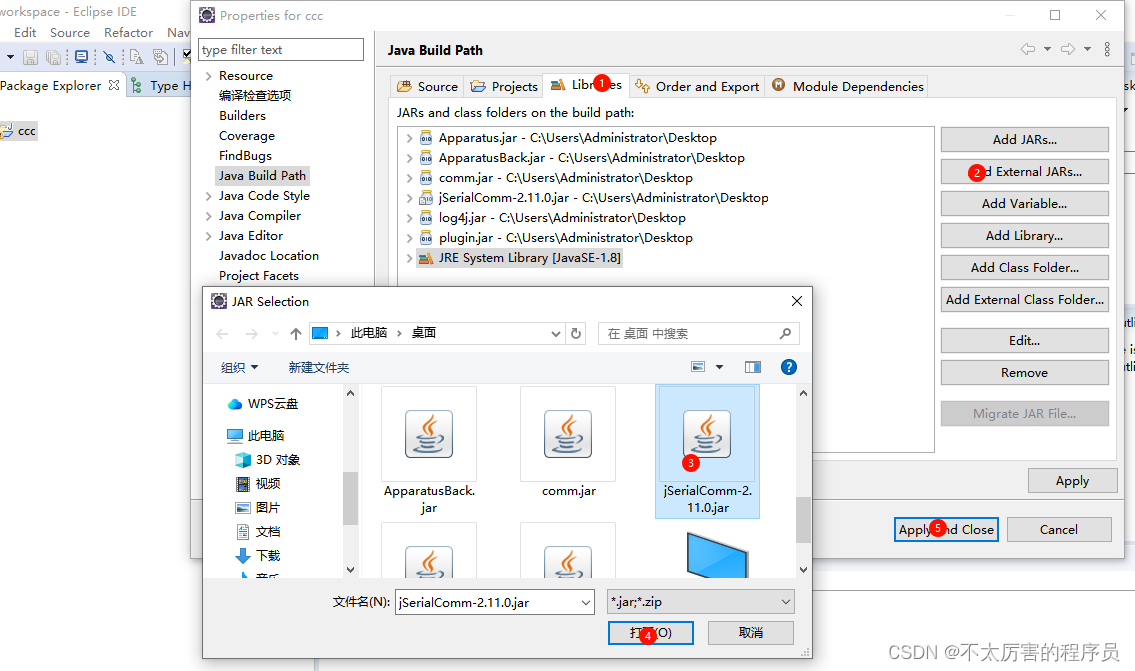
Jar包已经在资源中绑定,或者去官网上自行下载jSerialComm
注意当前jar包是配合JDK1.8环境使用,如果是1.8以下程序将直接中断
安装虚拟串口的软件
Configure Virtual Serial Port Driver:可以在没有物理意义上的设备时,虚拟出来两个串口,免费使用14天
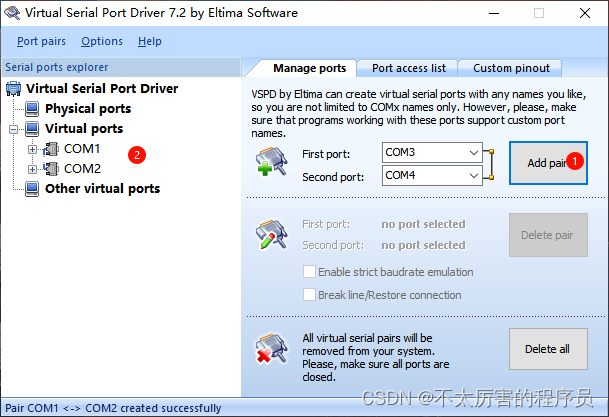 sscom5.13.1可以通过端口进行发送数据和接收数据的软件
sscom5.13.1可以通过端口进行发送数据和接收数据的软件
设置发送端,端口使用COM2
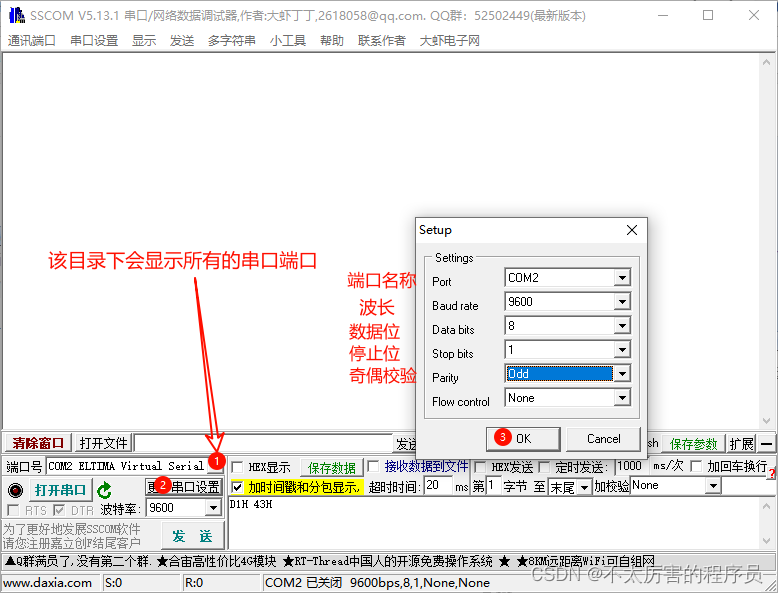
同样的设置第二个页面接收页面,接收端设置为COM1
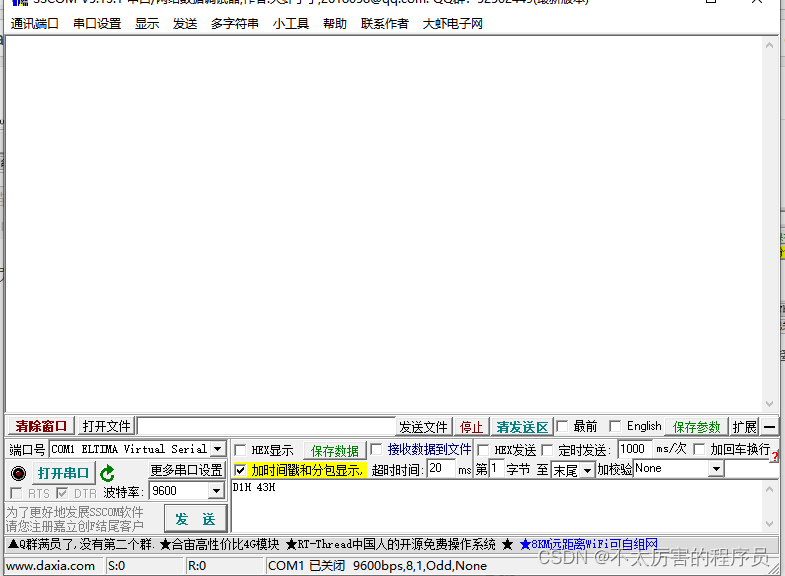
端口连接是否正常
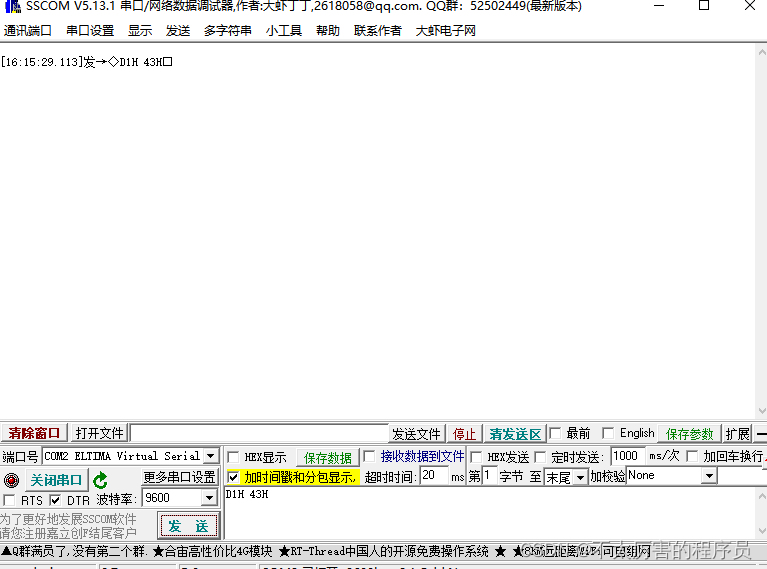
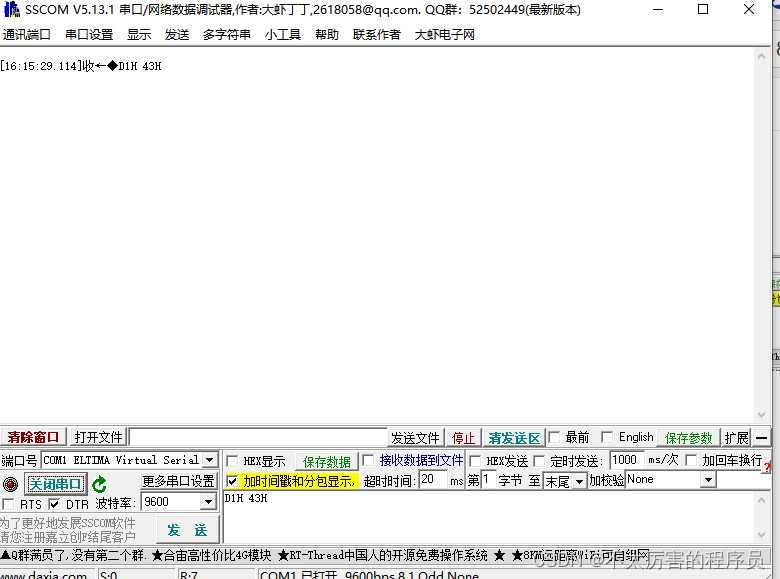
测试通过
测试通过以后再进行代码的编写,不然不利于排除错误。
Java代码读取串口数据
- Java代码接收串口传输的数据
package dzz.com;
import com.fazecast.jSerialComm.SerialPort;
import com.fazecast.jSerialComm.SerialPortDataListener;
import com.fazecast.jSerialComm.SerialPortEvent; public class SerialPortReaderData { private SerialPort serialPort; public void openAndReadSerialPort(String portName) { // 查找并打开串口 serialPort = SerialPort.getCommPort(portName); if (serialPort.openPort()) { System.out.println("Port is open: " + portName); // 设置串口参数(这些参数应该与你的设备相匹配) serialPort.setBaudRate(9600); serialPort.setNumDataBits(8); serialPort.setNumStopBits(SerialPort.ONE_STOP_BIT);serialPort.setParity(SerialPort.ODD_PARITY);try {//休眠,因为防止过度的循环Thread.sleep(1000L);} catch (InterruptedException e) {closeSerialPort();}boolean flag=false;StringBuffer sb= new StringBuffer();while(serialPort.isOpen()) {//获取传输过来的数据长度int bytesAvailable = serialPort.bytesAvailable();
// System.out.println(bytesAvailable);//判断端口是否传输数据if(bytesAvailable!=-1&&bytesAvailable!=0) {byte[] newData = new byte[bytesAvailable]; //读取端口数据 int numRead = serialPort.readBytes(newData, newData.length); //解析成字符串并拼接sb.append(new String(newData, 0, numRead));flag=true;}//读取完成跳出循环if(flag&&(bytesAvailable==-1||bytesAvailable==0)) {break;}}System.out.println(sb.toString());closeSerialPort();}} //关闭端口释放资源private void closeSerialPort() { //判断是否已经关闭了端口if (serialPort != null && serialPort.isOpen()) { //移除端口的监听serialPort.removeDataListener(); //关闭端口serialPort.closePort(); System.out.println("Port closed."); } } public static void main(String[] args) { SerialPortReaderData reader = new SerialPortReaderData(); reader.openAndReadSerialPort("COM1"); // 替换为你的串口名 // 可以在这里添加其他逻辑,比如等待用户输入来退出程序等 // 注意:在实际应用中,你可能需要有一种机制来确保程序不会无限期地运行下去 // 例如,你可以设置一个超时时间或等待用户输入来关闭程序 }
}
- Java通过端口发送数据
package dzz.com;
import com.fazecast.jSerialComm.SerialPort; public class SerialSender { public static void main(String[] args) { // 列出所有可用的串口 SerialPort[] comPorts = SerialPort.getCommPorts(); for (SerialPort port : comPorts) { System.out.println("Found port: " + port.getSystemPortName()); } // 选择一个串口(这里假设我们选择第一个串口) SerialPort comPort = SerialPort.getCommPort("COM1"); // 打开串口 if (comPort.openPort()) { System.out.println("Port is open: " + comPort.getSystemPortName()); // 设置串口参数(这些参数应该与你的设备相匹配) comPort.setBaudRate(9600); comPort.setNumDataBits(8); comPort.setNumStopBits(SerialPort.ONE_STOP_BIT);comPort.setParity(SerialPort.ODD_PARITY);// 发送数据 String dataToSend = "Hello, Serial Port!"; byte[] data = dataToSend.getBytes(); int numWritten = comPort.writeBytes(data, data.length); System.out.println("Wrote " + numWritten + " bytes."); // 关闭串口 comPort.closePort(); } else { System.out.println("Unable to open " + comPort.getSystemPortName()); } }
}
- 读配置文件的形式动态设置端口值
import java.io.FileInputStream;
import java.io.IOException;
import java.io.InputStream;
import java.util.Properties; public class ConfigReader { //路径private static final String CONFIG_FILE = "app.properties"; public static void main(String[] args) { Properties properties = new Properties(); InputStream input = null; try { input = new FileInputStream(CONFIG_FILE); // 从输入流加载属性列表 properties.load(input); // 读取属性值 String name = properties.getProperty("port.name"); String baudrate = properties.getProperty("port.baudrate"); String numdataits = properties.getProperty("port.numdataits"); String stopbits = properties.getProperty("port.stopbits"); String parity = properties.getProperty("port.parity"); // 打印属性值 System.out.println("name" + name); } catch (IOException ex) { ex.printStackTrace(); } finally { if (input != null) { try { input.close(); } catch (IOException e) { e.printStackTrace(); } } } }
}
配置文件以properties为后缀名
port.name=COM1
port.baudrate=9600
port.numdataits=8
port.stopbits=1
port.parity=1



)





)

)





)

)